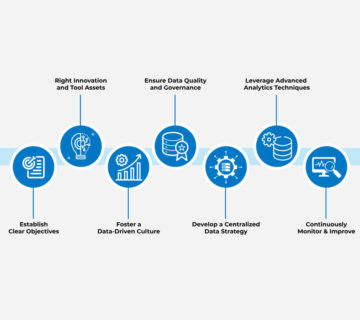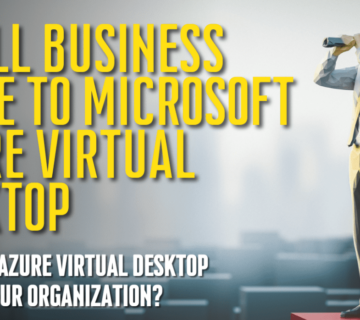Moving IT From CapEx to OpEx
Traditionally, IT infrastructure has always been an upfront cost and considered a capital expense (CapEx). Acquiring IT assets required IT managers and their teams to research every system component, including servers, racks, and everything involved with storage. Upon choosing and locating the appropriate components, the organization needed to purchase the equipment and configure the system. As a result, an organization could invest thousands of dollars before they could begin to implement and use the system.
For most organizations, IT departments earned the reputation of being a cost center. The IT department had enormous capital expenses associated with purchasing hardware, and the remainder of the budget went towards software upgrades and regular maintenance.
With maintenance and updates taking most of the department’s budget, IT departments were rarely able to innovate and improve, hampering the organization’s progress. In many organizations, the IT department was a necessary expense but seemed to add little value to the business after the investment.
However, today, an increasing amount of services and technology have moved to the cloud. Tasks that once required extensive investment in infrastructure can now be accomplished remotely via the cloud or by a dedicated company that charges a subscription fee for their services.
Today, organizations have increased access to the latest and most advanced technology options without the need for a significant upfront investment. Utilizing cloud-based services frees up money for investments or other projects that increase revenue and growth and enables your organization to move IT from CapEx to operating expenses (OpEx.)
Challenges With CapEx for IT Acquisitions
CapEx is an expenditure used to acquire, upgrade, and maintain physical assets, including IT equipment such as servers and power systems. CapEx is generally meant for static investments and refers to one-time purchases that will benefit your company over several years. The larger the portion of your IT budget committed to CapEX, the less cash flow available for short-term operations and special projects.
Some of the inherent challenges with capital spending on technology include:
- Large amounts of up-front cash required
- Lengthy and complex processes to estimate the budget and get it approved
- Guesswork to estimate future capacity needs of hardware and software is prone to error
- Once the technology is purchased, you own it, despite technology advancements, company growth, or the performance of the system
Benefits of Moving IT to OpEx
Unlike CapEx, OpEx is typically used to cover the day-to-day costs of operating a business and can be more stable. While many organizations are still reluctant to redistribute their IT spending to the cloud and other providers, the rapid speed that technology is advancing today makes a compelling reason for moving IT from CapEx to OpEx.
Operating expenses are intended for fluctuating costs, and it only makes sense that rapidly changing technology should be considered for OpEx. Here are a few of the benefits that moving IT from CapEx and OpEx could have for your organization.
Change the Way You Pay
With OpEx, you don’t need to pay for all your technology assets at once in a lump sum. Instead, the advent of cloud computing has changed how IT departments spend with a pay-as-you-go model. This change has helped shift IT spending from CapEx to OpEx by eliminating the significant upfront investment and replacing it with a predictable monthly fee. Once you enter into an agreement with your chosen IT Services Provider, you get access to the IT assets and services you need for a fixed and predictable monthly cost.
By shifting the cost of hardware and software to a third party, IT managers can focus on new technology and innovative solutions that help the organization save money and stimulate its growth. In addition, moving IT from CapEx to OpEx frees up a substantial amount of your IT budget, which you can use for more revenue-generating projects, such as entering new markets. Changing the way your company pays for IT can have a dramatic impact on your organization and give you a competitive advantage over your competitors.
Improve Your Scalability and Security
Another significant benefit of moving IT from CapEx to OpEx is increasing your flexibility, enabling your organization to be more agile and adapt quickly. Moving your IT to OpEx means that you can quickly and easily scale up or down as your needs change and use your vendor’s resources as needed.
In addition to ensuring access to the most advanced technology, moving your IT to OpEx provides greater security. In today’s rapidly changing technical environment, moving your IT to OpEx reduces your overall risk by freeing you from the responsibility of owning or maintaining network security systems. In addition, moving IT from CapEx to OpEx eliminates long-term investments in technology and enables you to pay for the service you need when you need it.
Staying in Compliance
One of the few areas that change as fast as the technological environment is the regulatory environment. Along with what seems like a near-constant flow of new regulations comes intense pressure for companies to remain in compliance. But unfortunately, substantial investments in technology alone do not guarantee that your system and data are secure. By working with a company with a proven track record, you can drastically reduce the cost of IT services and support while enhancing the security of your critical IT assets and data.
Move Your IT From CapEx to OpEx With Technijian
The decision of whether to handle IT expenditures as capital expenses or operating expenses may seem to be a decision that would be solely up to the accounting department. However, it’s essential for your entire team to understand the possible benefits of moving IT from CapEx to OpEx. In addition, understanding how technology investments are seen as operational expenses versus capital expenses is vital to getting the IT department and the accounting department on the same page concerning technology.
Choosing the IT experts at Technijian to move your IT from CapEx to OpEx can help your organization become more competitive and allow you to save time and money, which will benefit your entire organization. Contact us today to learn how our team of professionals can help you move IT from CapEx to OpEx.



No comment